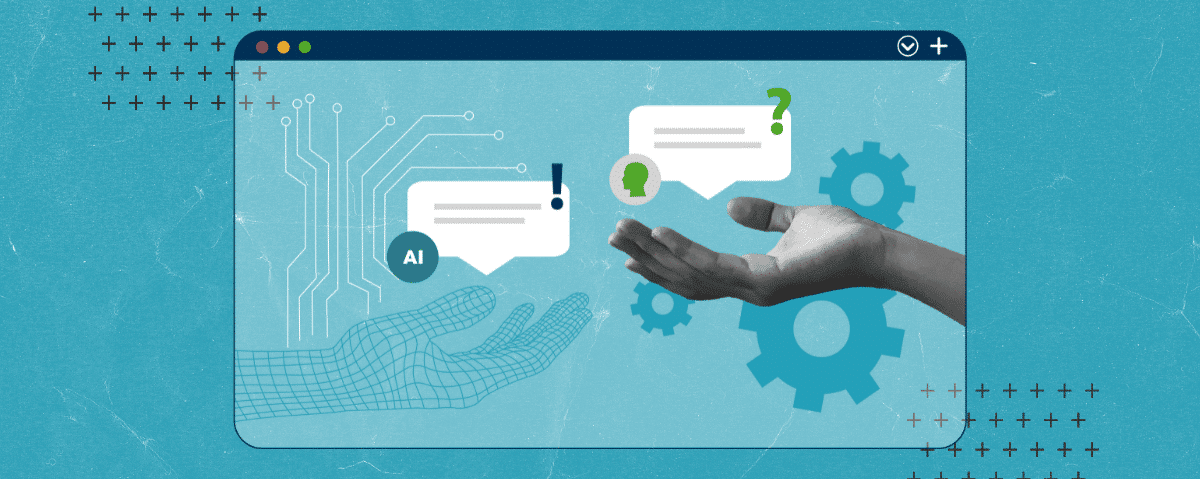
Artificial intelligence (AI) has taken center stage in various industries, promising groundbreaking advancements such as AI-generated content, images, video, and more. If you’re looking to integrate AI into your operations, you should know that the hype doesn’t always match the actual capabilities. In this article, Patrick Dougherty, Product Marketing Manager at Vendavo, explores this concept and illustrates the importance of explainable AI in commercial processes.
AI is surging. Innovations like ChatGPT, AI-generated images, and video deepfakes are capturing the attention of businesses and consumers. These advancements promise to revolutionize how we work and interact with technology, but we need to keep a balanced perspective.
Like any technology, AI is always evolving. That means more opportunities to implement it, which is great, but it also means there’s more potential for exaggerated expectations. Anyone who fails to understand the technology is at risk of falling prey to the latest shiny object, but this shiny object could create massive problems if it doesn’t have human oversight.
The hype around AI can be overwhelming, but businesses get to decide how complex they want their processes to be. The most important thing about using it in the corporate space, especially for tasks like pricing, is to first understand both AI’s perks and limitations.
The Robot Vacuum Analogy
The AI hype versus reality topic reminds me of a conversation I had with a friend recently when I got myself a robot vacuum.
People purchase a vacuum and think, “This is amazing, I’ll never have to vacuum again!” But the reality is a bit different:
- The vacuum itself needs cleaning and maintenance to keep it running smoothly.
- There will be wear and tear on the components, so you’ll need to replace parts.
- Certain areas of your home will require manual pre-vacuuming or staging.
- And, of course, robot vacuums can’t fully replace the precision or deep cleaning you can achieve with manual vacuuming.
Sure, these robot vacuums do a decent job in straightforward spaces. But throw in some challenges like different floor surfaces, edges, cords, or – heaven forbid – a mischievous pet, and suddenly they don’t seem so smart anymore.
The point is, you don’t buy a robot vacuum and never vacuum again. You also don’t get access to ChatGPT and immediately use it every day for everything you do.
AI technologies sound like great ideas on the surface, but they have a lot of limitations. The key is to understand the limitations and challenges, so you can find the right solutions.
Myth vs. Reality: How AI Works in Commercial Processes
AI could fundamentally transform corporate and commercial processes, but there are myths to debunk. You might hear “AI” and assume “fully autonomous and flawless system,” but AI isn’t perfect or autonomous. It needs human input, assistance, and review.
At Vendavo, we firmly believe AI is most valuable and produces the best results when combined with human insights. While we’re enthusiastic advocates of AI, we also understand its limitations. It isn’t a magical fix. It excels when it complements human strengths, working together for optimal results.
How Explainable AI in Commercial Settings Makes a Difference
For AI to work in a setting, especially in a commercial one, it has to be explainable. Explainable AI is guidance that builds confidence because all the stakeholders involved understand the inputs. They can then trust the recommendations that AI-powered system provides.
Blindly relying on AI can lead to problems because the people who input commands into AI-powered systems don’t always understand the full parameters they need to get the results they want. This is unexplainable AI, and it leads to distrust and issues because the user doesn’t understand the data being used during a prompt or the recommendations that come back.
Be sure to ask:
- Which inputs were used so the technology could come to this realization?
- What can the sales team learn about these inputs to improve their level of trust in the recommendations?
- Any pricing optimization initiative is going to generate revenue, but what’s the quality of the improvement?
- How much human-led effort did it take to get to that improvement?
Not doing this can lead to disappointing outcomes that just don’t align with expectations. The trust factor is important because AI has a two-fold role in business: It helps automate processes and it gains the trust of – and adoption by – the teams it aims to support.
A sales team that uses AI-generated prices but doesn’t understand the reasoning behind those prices may be deterred from using AI. They’re not invested in the process or the outcome, and they don’t have transparency into how or why those prices were recommended.
A sales team that understands the prompts behind those price recommendations may be more inclined to embrace the technology, however. They’ve looked into the process, so they can better trust the outcomes and embrace the technology.
Striking the Balance Between Hype and Reality
Incorporating AI into commercial processes offers immense potential for efficiency and innovation. Be sure to approach the integration with caution and a realistic understanding of the AI’s capabilities.
A robot vacuum is valuable for home cleaning, and AI is valuable for commercial operations. Both have limitations, though. If you want to use AI, be sure to assess its value and limitations before implementing. Align your capabilities with your business goals before investing the time and resources. Finally, remember all AI systems require ongoing human involvement to ensure their effectiveness.
When you strike the right balance between the hype and reality of AI’s capabilities, you’ll be poised to harness its full potential.
